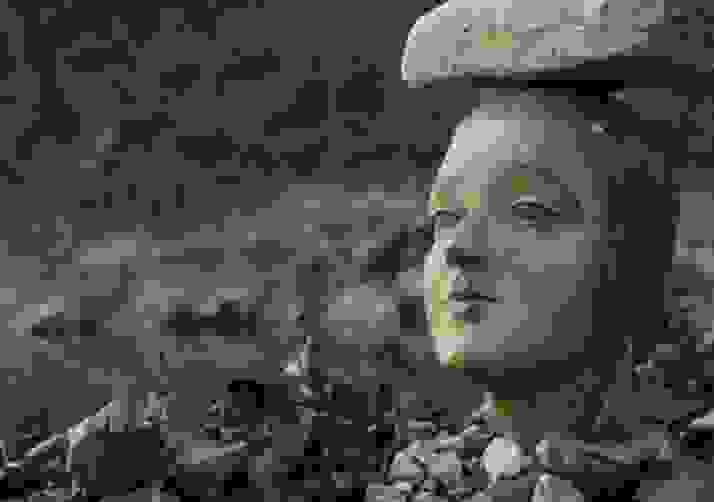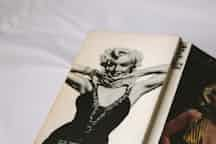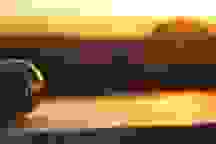Walter Hemlock was a quiet man. He lived alone in a house on 25 acres of mostly wooded land on the Pennsylvania side of the Mason-Dixon Line.
His wife died several years earlier, and he managed his grieving process pretty well. The few close friends they had took the time to fuss over him for a week or two, inviting him over for meals, calling him when they were going to the grocery store, inquiring if he needed anything and generally being attentive.
After a while, because he seemed to be handling it well enough, they settled back into their old routines only seeing him occasionally.
Walter spent more and more of his time out in the woods behind his house. Two of his 25 acres were cleared, and a neighbor with livestock grew corn on most of the cleared land. The rest of the property was left wild, full of birds and small animals and a deer or two.
Walter had been a cabinet maker, working in a window factory. He’d been retired for almost eight years, and he had a wood shop in the shed behind his house. He usually spent his days building small projects such as an end table, book shelves, a trunk, footstools and sometimes toys, most of which were sold at a shop in nearby Willow Grove.
Each year since his wife had died, he’d spent increasingly more time walking in the woods rather than working in his shop, until recently, when he sometimes spent the whole day wandering in the woods, noticing small clumps of moss, unusual wildflowers and especially the wide variety of trees and shrubs.
He liked to stand quietly and let the birds begin their chatter again as the stillness of the woods rose around him like a fine mist. He liked feeling that the small animals were tending to their business even though he was there, so he learned to move silently and slowly in the woods. He thought of himself as part of the woods, a regular you might say, compatible with nature’s creation in this little corner of the universe.
There was a large tree on his lot, one of the biggest, and it had been damaged by storm winds at some point in the past. Its top had been blown out and the branches had grown back to form a kind of crown. It was very tall and straight, and its shape made it stand out from the others.
One day in the late Fall, when the forest floor was soft and fresh with fallen leaves, and early mornings became frosty, Walter noticed a small crevice in the bottom of the tall tree, between two roots at ground level. He knelt down to peer inside, and it looked as if a small forest creature had used it for a den. He carefully reached inside and scooped out a handful of the dry debris so he could look at it. In the duff were remnants of acorns and hickory nuts, leaves and twigs, and lots of soft, rotted wood. He scraped out more and then bent his elbow to reach up into the tree to see if it was hollow. It was.
This discovery excited him, and he got busy scraping out more of the debris and the pile on the outside grew to the point where he had to spread it from side to side to make room for more. He leaned his head down close to the ground, trying to see if it really was hollow all the way up inside. He leaned in further and turned his shoulder to the ground and slipped his head carefully into the opening. As he looked upward inside the tree, squinting his eyes to protect them from falling crumbles of dry rotten wood, he turned onto his back and pushed himself into the opening like a mechanic under a car. The tree was hollow clear to the top.
Walter’s eyes focused on the top of the trunk, looking up the long, dark shaft of the huge hollow tube, and he felt suddenly that he was looking through a tunnel, horizontal instead of vertical, and he no longer felt his back against the soft earth beneath him. His gravitational plane had shifted, as quickly as that. One moment he was lying on his back looking up a tree, and the next he was floating at the end of a long tunnel. This loss of orientation, instead of being frightening, fascinated him and he stayed for nearly an hour looking up this giant, rough-sided tube, at the wisps of clouds fleeting past and the occasional dart of a bird flying by.
Walter was so pleased with his discovery that he returned to the tree immediately after breakfast the next day. He spent almost all day there, only taking a break to go back to the house for a bite of lunch and to go to the bathroom. He soon learned that for a two-hour period when the sun was at its highest, the effect of the tunnel wasn’t as pleasant. But, for the rest of the day he could experience the captivating display of sky, especially days with lots of clouds.
At sundown, he sometimes would stay in the tree until well after dark. He discovered that the stars seemed much brighter looking up through the tree, much to his delight. The view after dark was similar spatially as during the day. Again, he felt he was looking down a tunnel, and the stars made it seem as if he were standing at the edge of the Earth, looking out into space. The floating feeling he’d experienced during the day was even more pronounced at night.
As Autumn progressed, Walter spent more and more time in the woods with his head in the tree. He would go to bed studying star charts in an astronomy magazine, trying to figure out the constellations that he could see at the zenith passing over his tube. At sunset, Cygnus the swan was passing the zenith. In the morning, he sometimes finished breakfast well before dawn and rushed out to the tree, anxious to see what space the tree would be passing through on the new day’s journey. Just before sunrise one morning, he identified the two stars which designate the rear paw of Ursa Major, the Great Bear. As days and weeks passed, he became knowledgeable of the rotation of the constellations, especially those that traversed the zenith of the sky. Those that stayed near the horizon couldn’t appear at the end of his tunnel, of course, but he learned their names in passing as his awareness of the constellations increased with his studies, and he glimpsed them occasionally when he wasn’t under the tree.
One crisp, early winter’s day, as he lay on his back, bundled in his winter overcoat, gazing up the tree, a squirrel, working on its winter storage in a hollow branch high in the tree, dropped a hickory nut that hit Walter in the forehead. He saw it coming, actually, but was so fascinated with it tumbling down the long passage of the hollow trunk that he barely flinched. He reached his hand up into the tree beside his head and picked up the nut. The outside shell had dried and split open and he could snap it off with his thumbnail. He put the dried nut between his teeth and was able to crack it open. He chewed some of the nutmeat and spit out a crumb of shell.
Later that afternoon, a wind came up and blew leaves across the woods, piling some of them at the base of the tree over his body, legs and feet. The leaves formed a blanket and even though he was dressed warmly, he could tell the layer of leaves really did insulate him from the chilly breeze. He drifted off to sleep. It was time for his afternoon nap anyway.
He slept peacefully. When he awakened, it was raining, not hard, but with big widely separated droplets. As he watched the dark cloud over the end of the tunnel, raindrops would come hurtling down the tree and he found that he could open his mouth and catch some of them. The leaf blanket that covered his legs became more solid with the moisture and held in the warmth of his body. What a peaceful place, he thought, as he drifted off to sleep again.
Fourteen years later, on a blustery Fall day, two boys wandering in the woods came across the bones of what they thought was a headless man lying at the base of a tree. It turned out the man’s skull was inside the tree. Most of his clothes had rotted, and only the action of a gust of wind blowing leaves on the forest floor had exposed his shin bone.
. . . . . . end . . . . .







